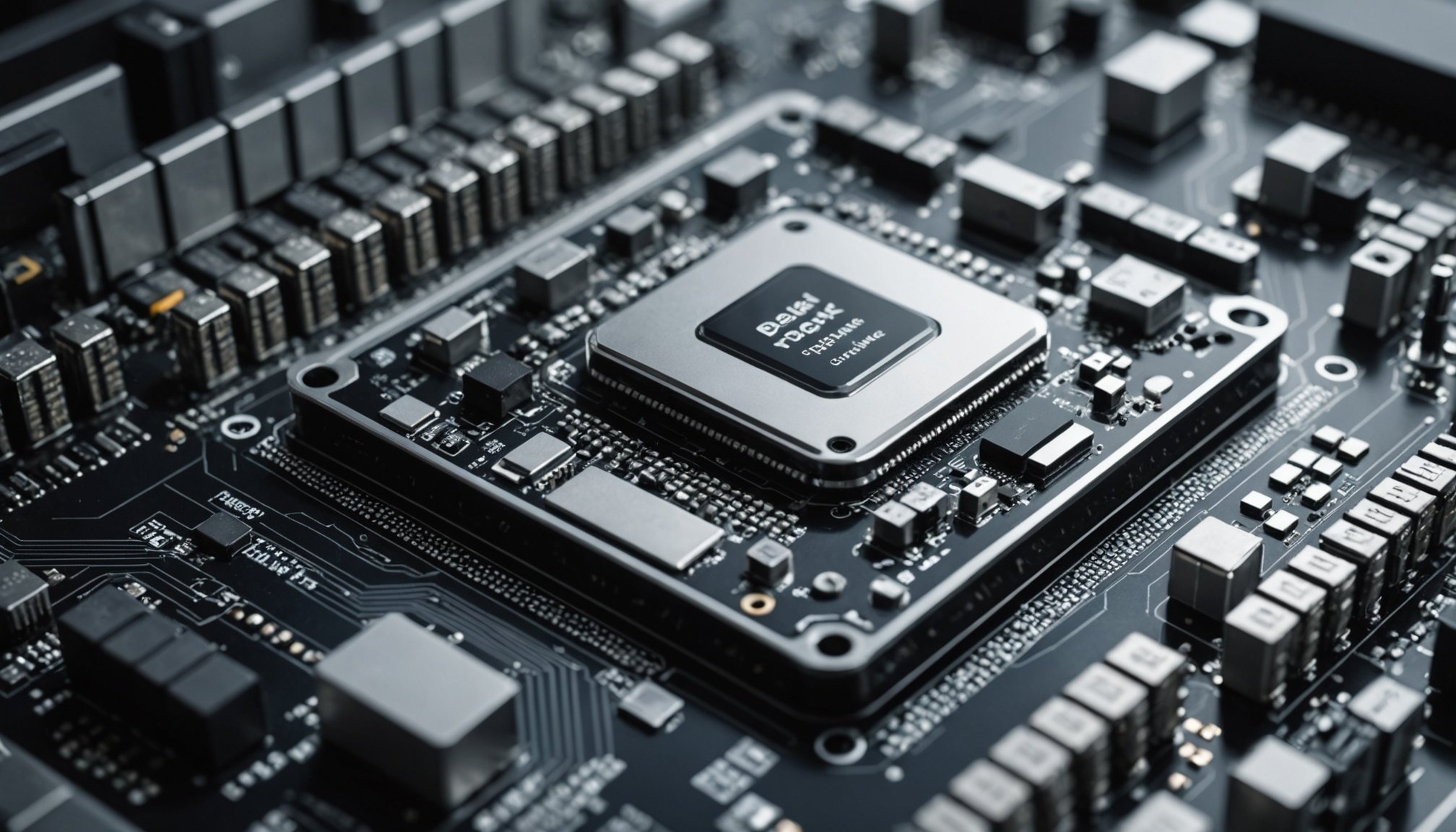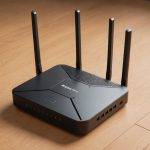Unlocking Peak Performance: Proven Optimization Strategies for Deep Learning Models on Edge Devices
In the era of pervasive computing, where devices from smartphones to IoT sensors are increasingly intelligent, the need to optimize deep learning models for edge devices has become paramount. Edge devices, operating at the periphery of the network, must process data in real-time, often with limited resources. Here, we delve into the strategies that unlock peak performance for deep learning models on these constrained yet powerful devices.
Understanding Edge Devices and Their Challenges
Edge devices, such as smartphones, smart home appliances, and industrial sensors, are designed to process data closer to where it is generated. This approach reduces the latency and bandwidth requirements associated with transmitting large volumes of data to central servers or cloud-based data centers[2].
Topic to read : Elevate your nlp performance: effective strategies to enhance model accuracy
However, these devices face significant challenges when it comes to running deep learning models. Deep neural networks, which are the backbone of many machine learning applications, require substantial computational power, memory, and storage. Edge devices, with their limited resources, struggle to meet these demands, leading to performance issues and inefficiencies[1].
The Role of Model Optimization
Model optimization is the key to bridging this gap. It involves refining the structure and function of deep learning models to make them more efficient and less resource-intensive. Here are some of the most effective optimization techniques:
Also read : Elevate your nlp performance: effective strategies to enhance model accuracy
Deep Neural Network Pruning
Deep neural network pruning is a technique that mimics the brain’s process of reducing unnecessary neural connections. By removing parameters that are not crucial to the model’s operation, pruning reduces the model’s size and computational requirements. This method can reduce model weights by more than 50% while maintaining accuracy levels, making it ideal for edge devices[1].
Hyperparameter Tuning
Hyperparameter tuning involves adjusting the preset values that guide the training process of a model. Techniques such as grid search, random search, and Bayesian optimization help find the optimal hyperparameters that improve the model’s efficiency and accuracy. For instance, tuning hyperparameters can significantly enhance the performance of a model on edge devices by ensuring that the model learns from the data more effectively[3].
Mixed Precision
Mixed precision involves using different levels of numerical precision in various layers of the model. By using lower precision where possible and higher precision where necessary, mixed precision reduces the computational and memory requirements without compromising accuracy. This technique is particularly useful for large models and large batch sizes, common in deep learning applications[3].
Quantization
Quantization reduces the precision of the model’s parameters from 32-bit floating-point numbers to lower precision formats like 8-bit integers. This reduction in precision significantly decreases the model’s size and computational needs, making it more suitable for edge devices. Quantization can be applied during the training process or post-training, offering flexibility in deployment[3].
Techniques for Optimizing Deep Learning Models
Simplifying Model Architecture
Simplifying the model architecture is another effective way to optimize deep learning models for edge devices. Techniques such as depthwise separable convolutions and residual connections can reduce the computational complexity of the model while maintaining its accuracy. For example, depthwise separable convolutions, used in models like MobileNet, significantly reduce the number of parameters and computations required[4].
Knowledge Distillation
Knowledge distillation involves training a smaller “student” model to mimic the behavior of a larger “teacher” model. This process allows the student model to capture the essential knowledge from the teacher model, resulting in a more compact and efficient model. Knowledge distillation is particularly useful for deploying large language models (LLMs) on edge devices, where memory and computational resources are limited[3].
Practical Insights and Actionable Advice
When optimizing deep learning models for edge devices, several practical considerations come into play:
-
Hardware Considerations: The choice of optimization technique depends on the available hardware. For instance, devices with limited memory and processing power may benefit more from quantization and pruning, while devices with more resources can leverage mixed precision and knowledge distillation[3].
-
Real-Time Processing: For applications requiring real-time processing, such as autonomous vehicles or augmented reality, techniques that reduce latency and inference time are crucial. Deep neural network pruning and simplifying model architecture can significantly speed up execution times[1].
-
Data Privacy and Security: Running machine learning models on edge devices enhances data privacy and security by reducing the need to transmit raw data across networks. This is particularly important in applications where data sensitivity is high, such as healthcare and finance[1].
Examples and Applications
Autonomous Vehicles
In autonomous vehicles, real-time processing is critical. Optimizing deep learning models using techniques like deep neural network pruning and mixed precision enables these vehicles to make quick and accurate decisions. For example, a pruned model can reduce the computational load on the vehicle’s GPU, allowing for faster inference times and more reliable real-time processing[1].
Healthcare Wearables
Healthcare wearables, such as smartwatches and fitness trackers, use machine learning to monitor health metrics. Optimizing these models using quantization and knowledge distillation allows them to run efficiently on the device, providing real-time insights without the need for constant cloud connectivity[2].
Smart Buildings
Smart buildings leverage edge machine learning to optimize energy consumption and improve occupant comfort. For instance, smart HVAC systems can adapt to the number of people in a room using optimized models that run locally on edge devices, reducing the need for cloud-based processing and enhancing real-time decision-making[2].
Comparative Analysis of Optimization Techniques
Here is a comparative table highlighting the key features and benefits of various optimization techniques:
| Technique | Description | Benefits | Challenges |
|---|---|---|---|
| Deep Neural Network Pruning | Removes unnecessary parameters | Reduces model size, memory usage, and computational needs | Potential loss in accuracy if not done carefully |
| Hyperparameter Tuning | Adjusts hyperparameters for optimal performance | Improves model accuracy and efficiency | Time-consuming and requires extensive search |
| Mixed Precision | Uses different precision levels in various layers | Reduces computational and memory needs without compromising accuracy | Requires careful layer selection and loss scaling |
| Quantization | Reduces precision of model parameters | Significantly reduces model size and computational needs | May result in slight accuracy loss |
| Knowledge Distillation | Trains a smaller model to mimic a larger model | Results in a compact and efficient model | Requires careful selection of teacher and student models |
Optimizing deep learning models for edge devices is a multifaceted challenge that requires a combination of techniques. By understanding the unique constraints and opportunities of edge computing, developers can leverage deep neural network pruning, hyperparameter tuning, mixed precision, quantization, and knowledge distillation to create efficient, real-time capable models.
As Karim Arabi from Qualcomm noted, “Edge computing stands in contrast to cloud computing, where remote data and services are available on demand to users. By performing computations locally, we can reduce latency, enhance privacy, and improve overall system efficiency”[2].
In the words of a developer working on edge AI projects, “Optimizing models for edge devices is not just about reducing size and computational needs; it’s about enabling real-time decision-making, enhancing data privacy, and making AI more accessible and sustainable.”
By adopting these optimization strategies, we can unlock the full potential of deep learning on edge devices, paving the way for a more intelligent, efficient, and connected world.











